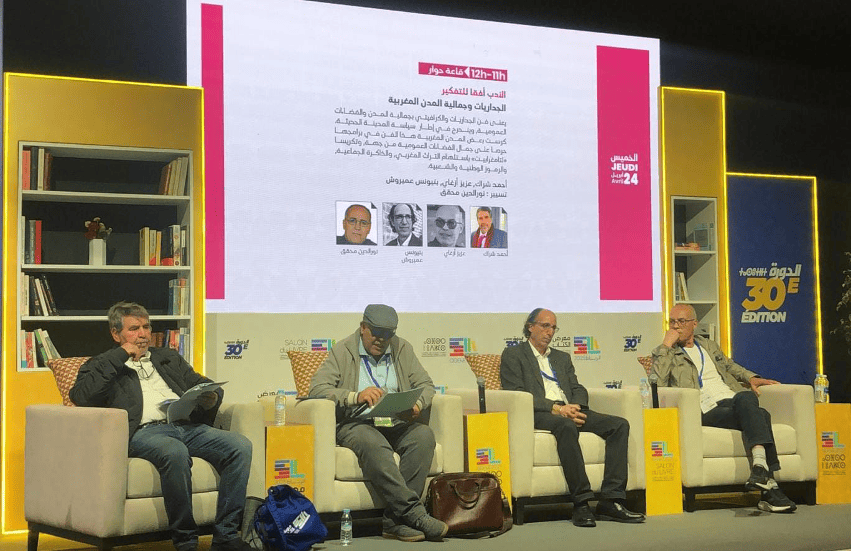Experts highlight the cultural, social, and political significance of murals in Morocco during a panel at the International Book and Publishing Fair.


Experts highlight the cultural, social, and political significance of murals in Morocco during a panel at the International Book and Publishing Fair.
Today, April 24th, 2025, the International Book and Publishing Fair hosted an open panel to explore the role of murals in enhancing the beauty of Moroccan cities. Moderated by Noureddine Mhakkik, the discussion brought together renowned scholars and artists to reflect on street art's artistic, social, and historical relevance in Morocco.
Sociologist and writer Ahmed Skirej initiated the conversation by questioning whether Morocco has developed true urban strategies, emphasizing the disorganized expansion of cities once residents take possession of their homes. He pointed out the historical resistance to murals and mural art, noting that even developed countries like the United States once dedicated large budgets to erasing murals. However, over time, murals have evolved from simple text-based graffiti to complex visual art that asserts its presence despite initial rejection. “We are now speaking of murals as an official street art form, with festivals dedicated to it,” he remarked, referencing Moroccan mural pioneer Abdellah Krine, who was active in the 1970s.
Poet and visual artist Aziz Arghai approached the topic from a philosophical and historical perspective. “The first human perceived the world through his eyes, long before spoken language,” he explained, suggesting that mural art is one of humanity’s earliest tools for expressing fears and achievements. He further traced the evolution of mural art to its political use in socialist demonstrations, some of which are still preserved in public spaces today.
Art critic, professor, and visual artist Benyounes Amriouch emphasized the strong connection between mural art and urban space. He explained that the celebration of murals began in Morocco with the cultural season of Asilah. According to Amriouch, murals are now considered one of the components of modern urban identity. “Urban life cannot rely solely on infrastructure; it needs aesthetic value,” he said, stressing that murals reflect the cultural sophistication of a city. He also noted how murals have become a source of pride, citing examples like the large portraits of national football figures such as coach Walid Regragui and famous players.
The panel highlighted how murals in Morocco have grown from a form of rebellion to a celebrated artistic and cultural expression. As cities expand and evolve, mural art has become a crucial element in shaping urban identity, merging aesthetic value with historical memory and social commentary. Through their vibrant colors and powerful messages, murals are not only beautifying cities but also narrating Morocco’s evolving cultural story.
